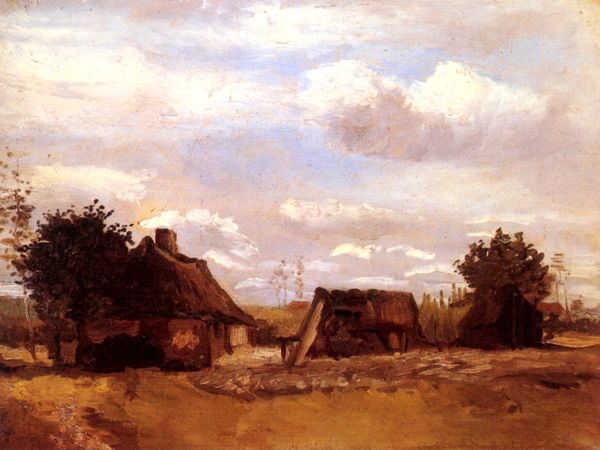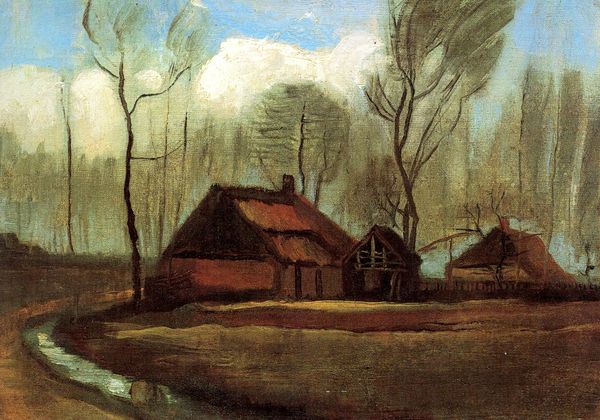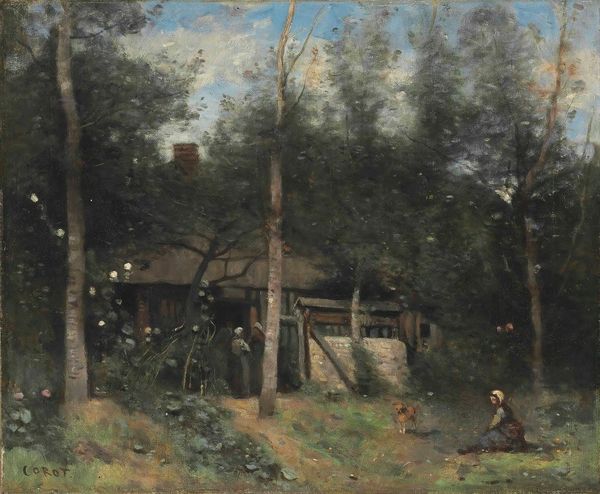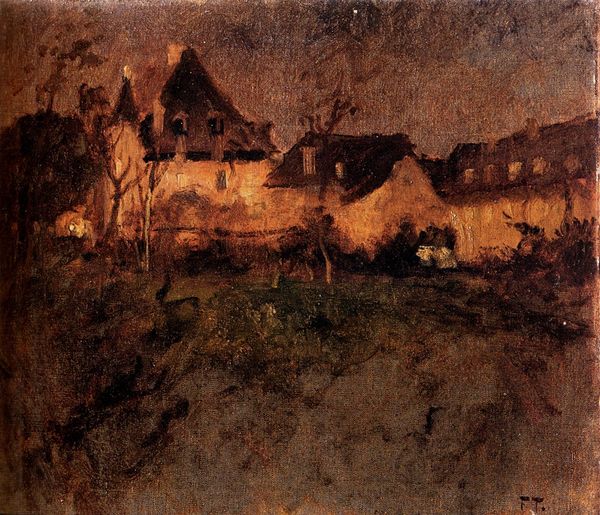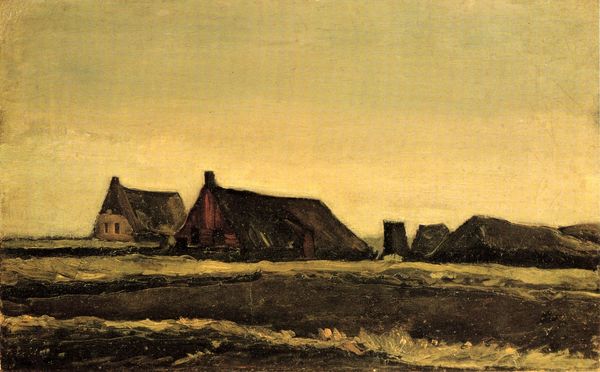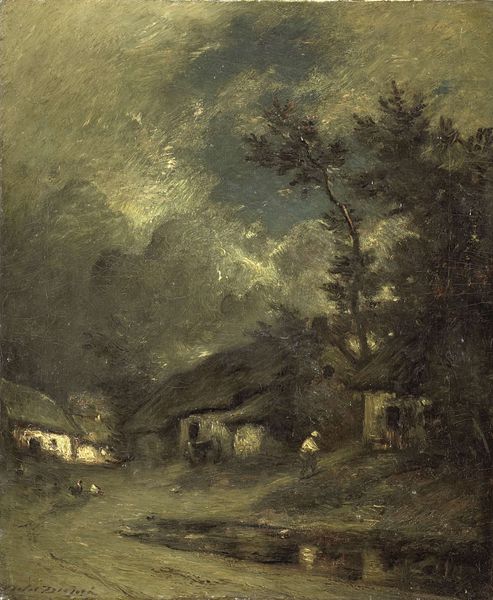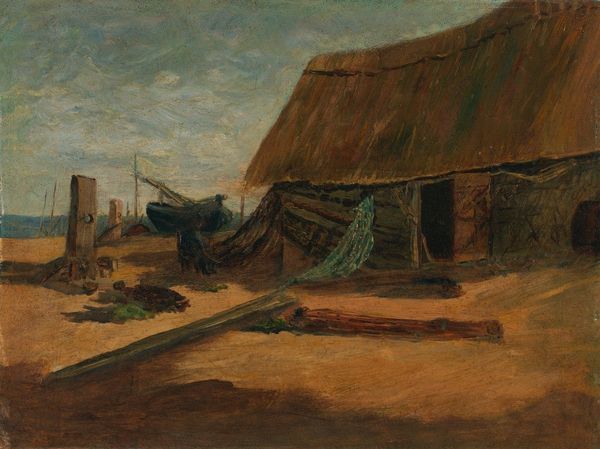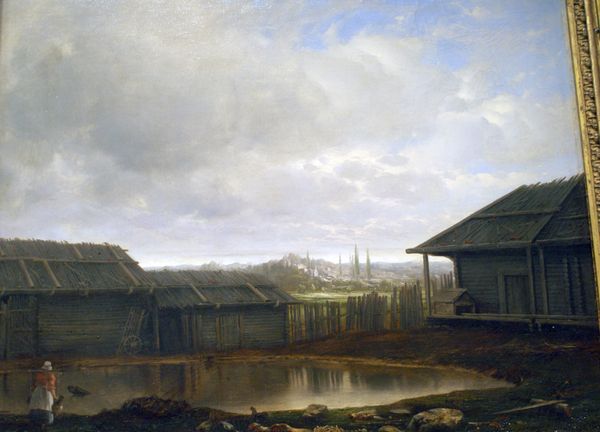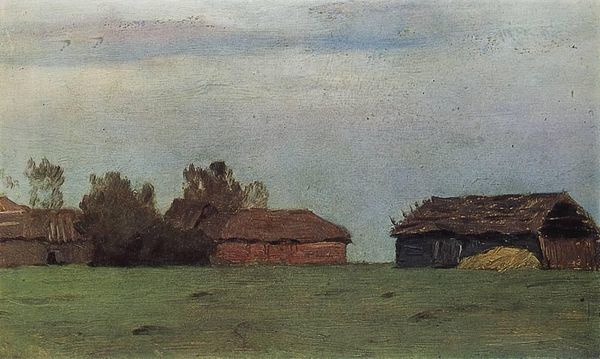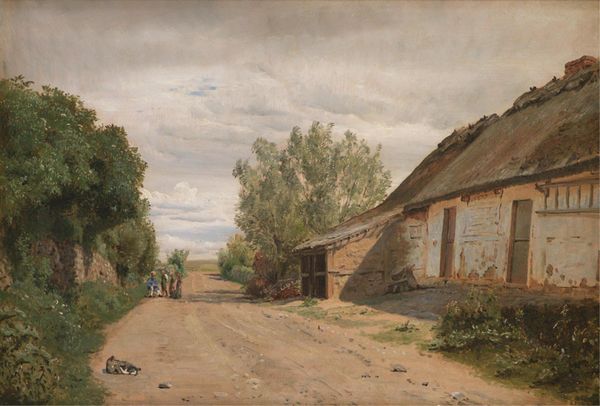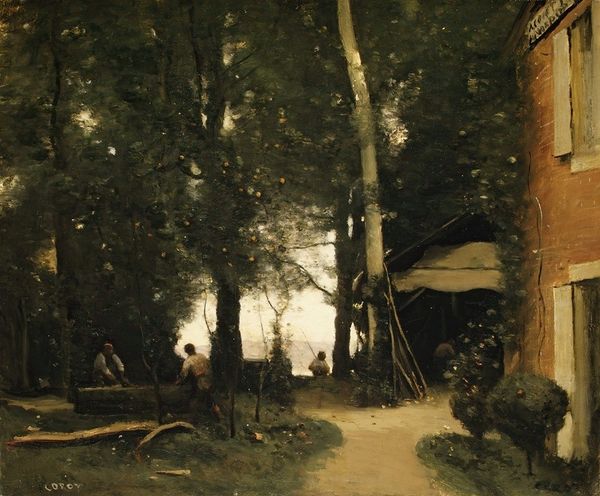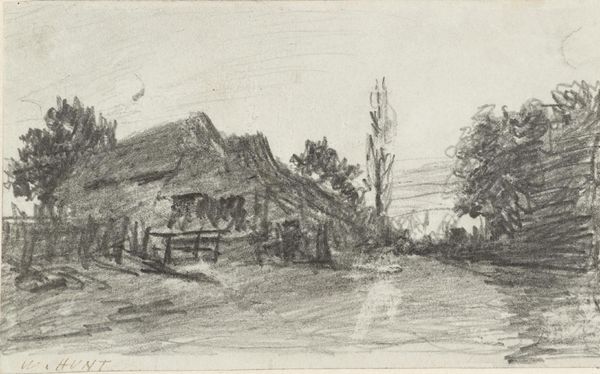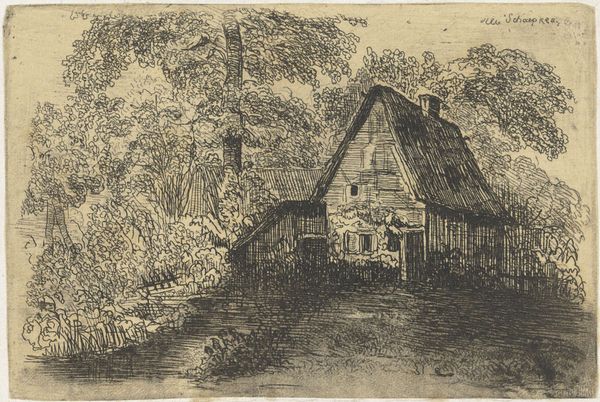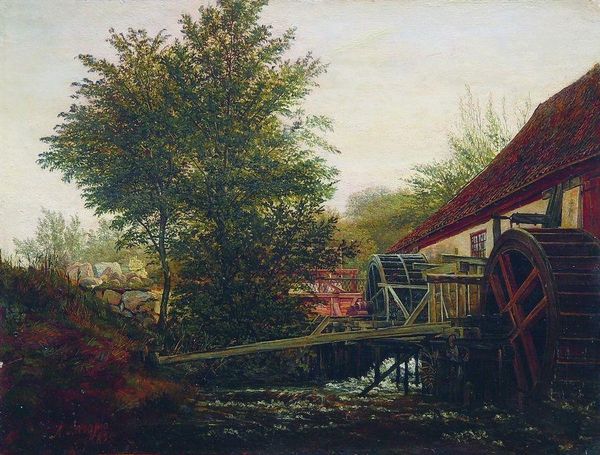
oil-paint
#
impressionism
#
oil-paint
#
landscape
#
oil painting
#
realism
Copyright: Public domain
Curator: This is Vincent van Gogh's "Watermill in Kollen, near Nuenen," painted in 1884. What are your initial thoughts? Editor: It's quite somber, wouldn't you say? The dark structures of the mill almost swallow the light, save for the rushing water and those rusty roofs. It's a brooding kind of beauty. Curator: Yes, and it depicts a powerful symbol. Watermills throughout history are often connected to cycles of life and death, renewal, and the relentlessness of time, grinding away. In peasant life, they represent daily bread and material support, yet Van Gogh seems focused on the ominous architecture rather than on bountiful nature. Editor: The muted color palette reinforces that. Van Gogh's use of darker tones is interesting here. There’s a limited range of earthy browns and blues. And the impasto! Notice how thickly he's layered the paint, especially in the water and on the foliage. The very texture conveys a sense of weight. It suggests physical labor and the solidity of the structure. Curator: That texture speaks volumes about Van Gogh's own identification with the peasant class during this period. The mill as a subject also brings with it folkloric weight. Myths and fairytales link mills to something between worlds and dimensions. And look how he’s placed the two watermills close together—mirror images or reflections. A double image strengthens any association with the spectral. Editor: I see what you mean. Although his mark-making suggests he spent a lot of time outside observing the scene, it does not necessarily communicate optical truth; it translates the feel of the place. It is this quality of heightened reality—a psychological presence that radiates outward through structural form—that I appreciate most about it. Curator: For me, this painting really highlights Van Gogh's ability to imbue ordinary scenes with layers of meaning. The watermill, beyond being just a building, transforms into an entity imbued with cultural memory, historical context, and even psychological depth. It speaks of Van Gogh's deep empathy and how he visualized art in terms of social meaning. Editor: I concur. The materiality elevates the formal qualities so the experience exceeds pure mimesis. Curator: Well, considering all of this, it's clear that even what appears to be a simple landscape can become a profound statement about life, time, and the human condition. Editor: Indeed. Analyzing this artwork has highlighted the artist's adept control of visual form.
Comments
No comments
Be the first to comment and join the conversation on the ultimate creative platform.
